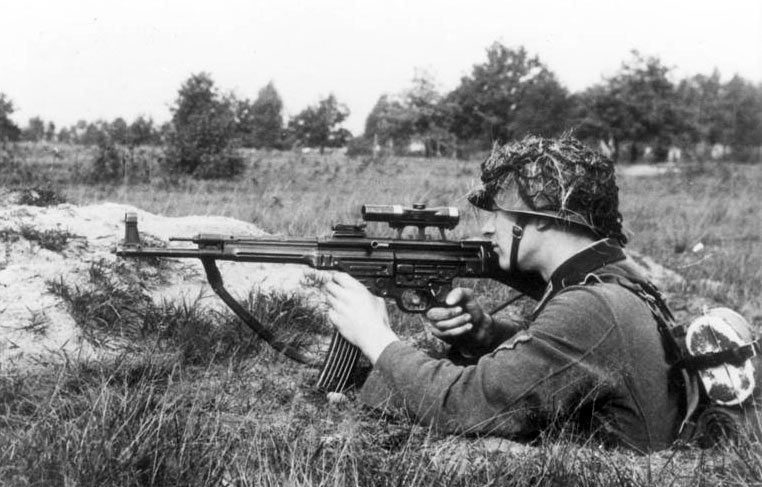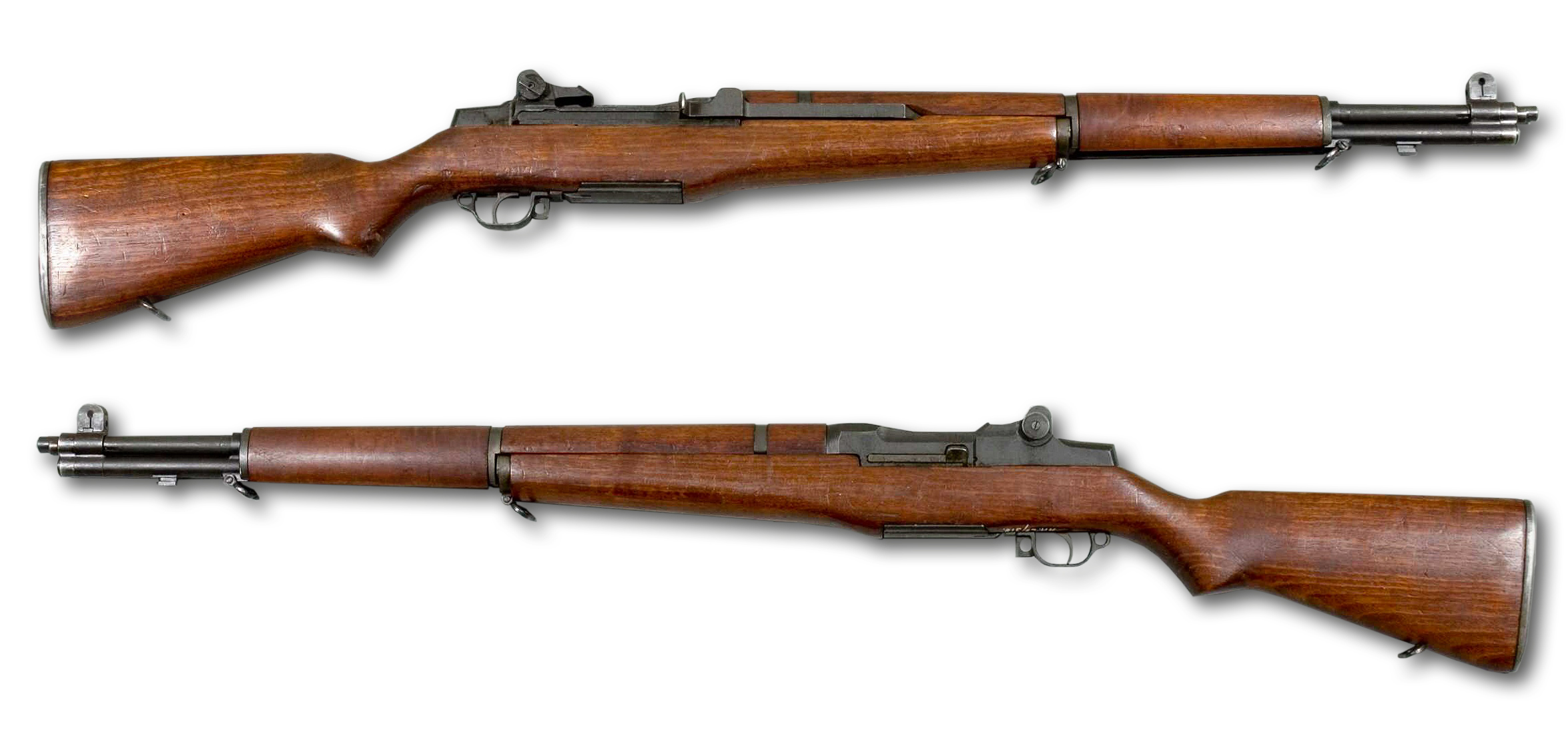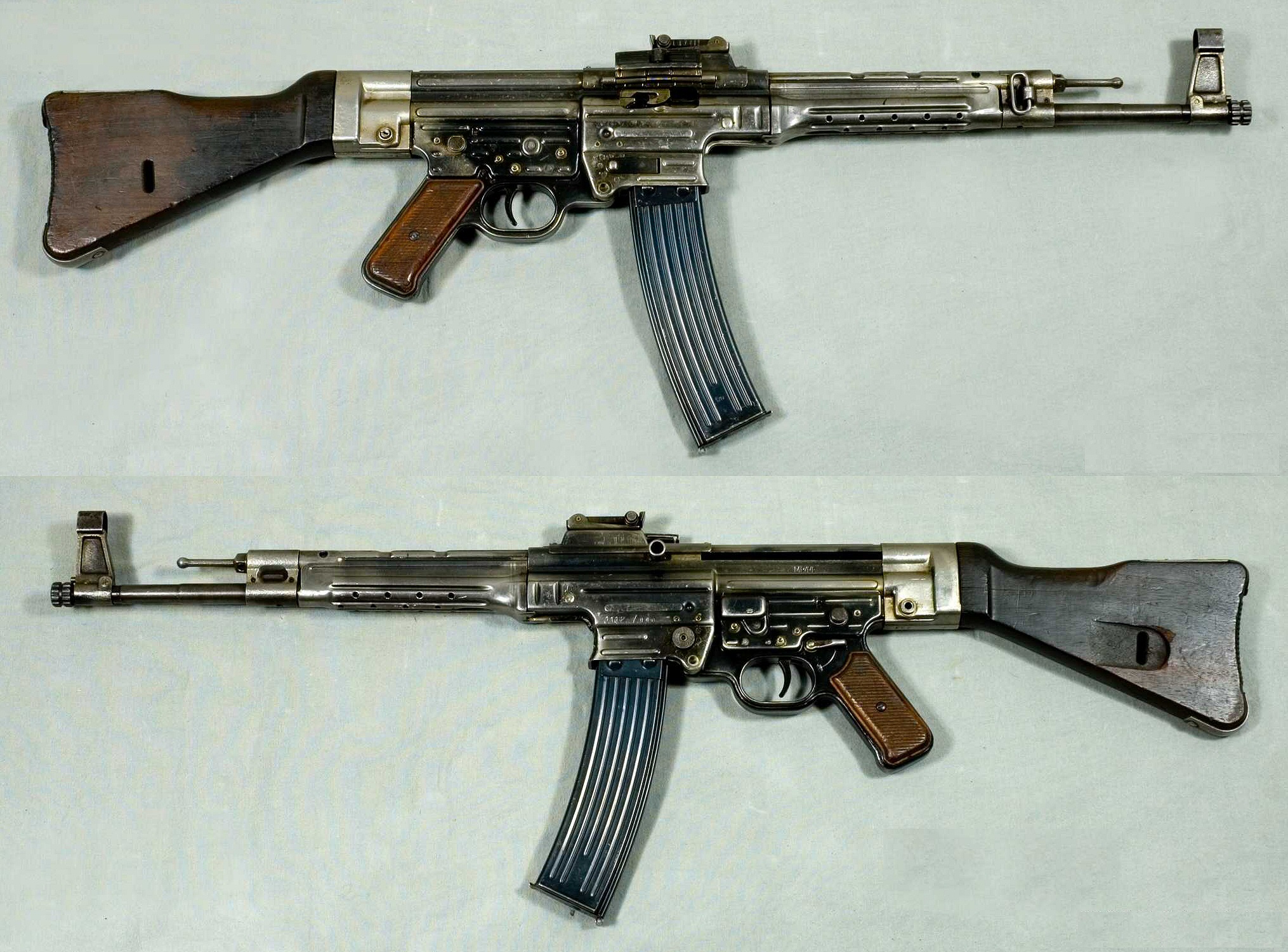
A brief primer on firearms history and technology, especially on "assault weapons" and "assault rifles", in (probably vain) hopes of reducing the number of head-desk-inducingly inaccurate posts and memes about firearms.
If you want to participate in the discussion about gun laws, you ought to at least have some idea what different sort of guns are. This post is intended to be informative about history and technology of firearms, not to argue for or against any legal policy.
Nineteenth Century
The technology of modern firearms was all in place by the end of the 1800s.
Every modern firearm is based around the cartridge, the self-contained unit loaded with propellant ("gunpowder", though technically that only refers to old-style black powder), projectile ("bullet" or "shot"), and primer (the thing that when hit or crushed by the firing pin or other mechanism, starts the propellant burning). In most guns this is a metallic cartridge, a brass cylinder with the bullet sticking out of one end, the primer in the other, and propellant in between. Shotgun shells are a type of cartridge usually made from plastic. (Before the 1960s they were usually paper; perhaps we'll see a return to that. I hate finding litter from spent plastic shotgun shells in the woods.)
And every modern firearm has a repeating action -- the mechanism that removes a spent cartridge, loads a new one into place, and strikes the primer to ignite the propellant.
MAS 1873 revolver. Image from Luis perenna via Wikimedia Commons, CC-BY-SA 2.5
The revolver was the first practical repeating action. In modern double action revolvers, the force of pulling the trigger rotates the cylinder to a chamber holding a fresh round, cocks the hammer back, and lets it fall, firing the gun. A double-action revolver will fire as fast as you can pull the trigger, though it takes some hand-strength. (Record holder Jerry Miculek once fired twelve rounds from a revolver in three seconds, including reloading time.)
Revolvers using metallic cartridges loaded with black powder entered production in the 1850s, but these were single-action revolvers where the cocking the hammer and rotating the cylinder was a separate action from firing the gun. (However, a single action revolver can be "fanned" for rapid fire.)
In 1873, the French army adopted the Chamelot-Delvigne double-action revolver, a gun which worked mechanically in the same basic way as a revolver one might buy today, though it would have fired black powder cartridges.
On the long gun side, the lever action rifle is known to us from cowboy movies; working the lever under the gun loads the next round. A shooter with a lever action rifle can achieve rates of fire greater than one round per second.

Winchester rifle. Image from Antique Military Rifles via Wikimedia Commons, CC-BY-SA 2.0
But it's hard to work that lever while lying down or looking over the edge of a trench or parapet, as one would do on the battlefield to avoid enemy fire. So bolt action rifles, where the operator works a handle on the side of the rifle directly attached to the bolt, were more common for military use. A shooter with a bolt action rifle can achieve rates of fire greater than one round per second.
Pump action (a.k.a. "slide" action) is mostly used for shotguns, but there are some rifles which use it. This mechanism was first patented in 1854. And a shooter with a pump action rifle can achieve rates of fire greater than one round per second.
In 1884, French chemist Paul Vieille invented his Poudre B "smokeless powder". Similar concoctions followed, and this class of propellants replaced black powder through the 1880s and 1890s.
These improved propellants allowed some of the energy from firing the gun to be used to expel the spent round and load a new one -- "automatic" or "semi-automatic" (a.k.a. "auto-loading") action. Automatic firearms (informally called machine guns though there is a technical distinction) fire continually while triggered, while semi-automatic ones fire once for each pull of the trigger -- the same as a double-action revolver, just requiring less muscle power from the operator.
(There are a variety of ways that semi-automatic and full-auto actions work, which we won't get into here; what's significant is that they use part of the energy of one round to load the next one.)
The Maxim machine gun, which introduced the world to slaughter on a truly industrial scale and help push British imperialism into overdrive (and thus set up World War I) was introduced in 1884. Ferdinand Ritter von Mannlicher developed a landmark semi-automatic rifle in 1885; The Borchardt C-93 semi-automatic pistol entered production in 1893.
So semi-automatic and fully automatic firearms are nineteenth century technology, not new demons of the twenty-first.
Twentieth Century
The development of these technologies continued in the early 1900s. Most significant is probably the Colt M1911, which set the pattern for every modern semi-auto handgun. (Again, let me point out that the basic technology here is now over a century old.)
In the First World War, while semi-automatic rifles existed, they were not reliable in battlefield conditions (mud, water, and poor maintenance practices). And soldiers mostly shot at each other from far away. Semi-automatic weapons have shorter range; they use some of the energy to load the next round, and have more complex mechanisms that can only withstand less powerful firing.
Soldiers didn't need a rapid fire capability as much as they needed rifles that could fire far distances accurately. Thus, the bolt-action battle rifle -- e.g. the Lee-Enfield and Springfield rifles-- dominated WWI.
With practice, a soldier using such a rifle could accurately fire 15 rounds per minute at a target 900 feet away. An expert could reach 30 rounds/minute -- the limiting factor was more the time to aim than the time to cycle the action. Maximum effective range of such rifles was up to 3,000 ft.
While semi-automatic rifles didn't see much use in WWI due to their limitations, semi-automatic handguns (like the M1911) and fully-automatic submachine guns (which fire rounds the same lower-power type as handguns do) were in use.
By World War II, the Germany and the UK were still using such bolt-action rifles. But the US had improved the semi-automatic rifle further resulting in the M1 Garand, a semi-automatic rifle that fired the same big long-range cartridge, the .30-06, as the Springfield bolt-action rifle.

M1 Garand. Image from The Swedish Army Museum via Wikicommons, CC-BY-SA 4.0
The Garand gave the US an edge (not a huge one, but an edge), and the Nazis started working on a semi-automatic rifle. But they also realized that they weren't shooting at people a half-mile away anymore.
WWII brought combatants closer together. Rather than trench warfare, there was more house-to-house fighting, with combatants more mobile and shooting at each other from closer range.
So the Germans realized they could use a less powerful round. That means the rifle could be lighter, semi-automatic operation became more practical. And with ammunition being lighter a soldier could carry more of it.
With more ammo, they could even give the rifle a full-auto mode, to replace the submachine gun. That was mainly useful for suppressive fire -- making the other guys keep their heads down rather than shooting at you.
(Militaries have mixed feelings about automatic fire; they don't like their soldiers wasting ammunition. That's why these rifles weren't made to be in full-auto mode all the time. Ammunition discipline is serious business when every round has to be delivered to the front lines by someone avoiding enemy fire.)
So late in the war -- too late to matter much, thank deities -- the Nazis developed the "Sturmgewehr": the "assault rifle". It fired a less powerful round than previous "battle rifles" and had two modes of fire, semi-auto and full auto. That's what defines an assault rifle. That's not an arbitrary definition, that's the U.S. Army definition: "short, compact, selective-fire weapons that fire a cartridge intermediate in power between submachinegun and rifle cartridges."
Detachable box magazines are sometimes cited as part of the definition, but reloading by changing magazines versus using a stripper clip to refill an integral magazine is a less significant point. (The magazine is the container for ammunition; it's either integral to the gun itself, in which case you reload it by putting in a number of rounds clipped together in some way, or it's detachable and you put a new one in.)
Assault Rifle versus "Assault Weapon"

Sturmgewehr 44. Public domain image from Swedish Army Museum via Wikimedia commons
The key points are that assault rifles fire a less powerful round than previous generations of military rifle, or than many hunting rifles. "High powered assault rifle" is an oxymoron. They are also, by definition, select-fire. If it can't operate in full-auto or burst-fire mode, it's not an assault rifle.
Nazis suck, but the Germans are good engineers. The Sturmgewehr project didn't get far before the end of the war but the idea was copied, first by the Russians (the AK-47), eventually by the US (the M-16).
Enter now American culture and it's weird mix of militarism and hoplophobia.
Assault rifles, being capable of full-auto firing, are "machine guns" under the National Firearms Act of 1934 and are heavily regulated. They are very expensive and you can't legally buy one without a lot of paperwork.
(Of course, if you have the cash, the black market can provide an assault rifle without the paperwork; but crooks prefer handguns. There's little demand.)
There are sound reasons why a civilian who wants a rifle would want something similar to standard military-issue. Supply of parts and ammunition is likely to be good. And some will be familiar with the military versions from past service; the closer their civilian rifle is, the more they can apply previous experience.
There are also bad reasons, which anyone who has encountered a gun store commando with a military fetish will understand.
The Colt AR-15, a semiautomatic rifle (thus not an assault rifle) which looks like, uses some of the same parts as, and fires the same round as the M-16, entered the market in 1963. Clones came around in the 70s after patents expired.
Again: the AR-15 is a less powerful rifle than the M1 Garand of WWII -- a rifle widely available since the 1930s, and up to the 1990s sold to citizens by the feds via the Civilian Marksmanship Program. Semiautomatic rifles are a 19th century technology, not some brand new evil of the 21st century. They have been common since the 1930s. And the AR-15 itself, which does not introduce any new core features over earlier semiautomatic rifles, has been with us for over a half-century. It just looks different than older rifles.
It's not clear whether the term "assault weapon" was first coined by gun makers who wanted to appeal to gun store commando military fetishists, or hopolophobes who found guns with cosmetic military styling too scary.
Either way, it's clear that from the start the term "assault weapon" was intended to conflate assault rifles with guns that operate in a completely different fashion.
And it has primarily been used in that context by proponents of more prohibition laws. Prohibition activist and Violence Policy Center founder Josh Sugarmann helped promote such misleading use when he wrote in 1988,
Assault weapons are increasingly being perceived by legislators, police organizations, handgun restriction advocates, and the press as a public health threat. As these weapons come to be associated with drug traffickers, paramilitary extremists, and survivalists, their television and movie glamour is losing its lustre to a violent reality.
Because of this fact, assault weapons are quickly becoming the leading topic of America's gun control debate and will most likely remain the leading gun control issue for the near future. Such a shift will not only damage America's gun lobby, but strengthen the handgun restriction lobby...
...The weapons' menacing looks, coupled with the public's confusion over fully automatic machine guns versus semi-automatic assault weapons—anything that looks like a machine gun is assumed to be a machine gun—can only increase the chance of public support for restrictions on these weapons. In addition, few people can envision a practical use for these weapons.
Unlike "assault rifle", "assault weapon" is not a term that refers to core functional features of a firearm. Rifles get listed or de-listed from "assault weapons" rosters on small body-styling changes. It is a term deliberately used to exploit confusion: as Sugarmann wrote, "anything that looks like a machine gun is assumed to be a machine gun".
So please, regardless of your take on firearm laws, use the term "assault rifle" properly. And avoid the dishonest term "assault weapon"; it's bad practice to use a term deliberately introduced to confuse the issue.
Article image: Soldier of Nazi Germany with Sturmgewehr 44, via Wikipedia, Bundesarchiv, Bild 146-1979-118-55 / CC-BY-SA 3.0